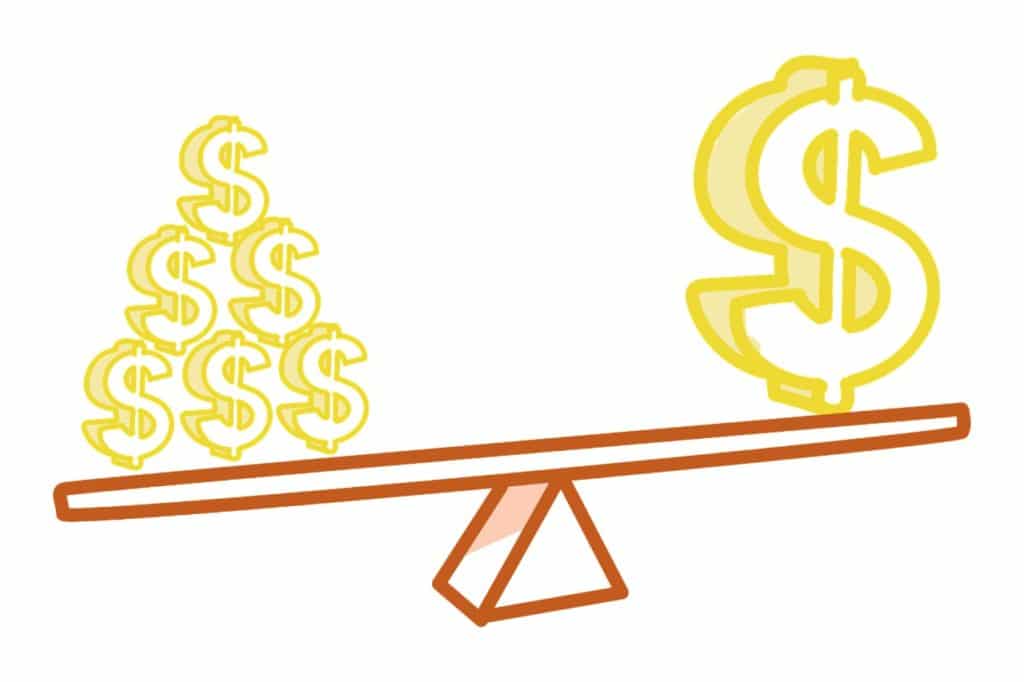When a company invests to increase its asset base and earn returns on risky investments, it uses lent capital as a financing source. Leverage is an investing technique that entails leveraging borrowed money, specifically, different financial instruments or borrowed capital to raise an investment’s potential return. The use of debt (borrowed capital) to fund an acquisition or operation is known as leveraging. As a consequence, the project’s future returns are multiplied. Simultaneously, debt increases the future downside risk if the investment does not work out. When a firm, a property, or investment is defined as “highly leveraged,” it means it has more debt than equity.
Both consumers and businesses use the idea of leverage. Investors use equity to boost the amount of money they will make from a given stake. They use a variety of tools to leverage their portfolios, including stocks, futures, and margin accounts. Leverage can be used to fund a company’s investments. Investors who are unable to use leverage directly may use leverage implicitly in a number of ways. They will invest in businesses that use leverage to fund or increase activities in the usual course of business without raising their outlay.
Characteristics of Leverage
Investors will research the debt and equity on the accounts of different corporations using balance sheet analyses and invest in companies that use capital to their advantage. Return on equity (ROE), debt to equity (D/E), and return on capital invested (ROCE) are all metrics that help investors figure out how firms spend their money and how much of it they borrow.
It’s important to remember that leverage comes in many forms, including operational, financial, and cumulative leverage when evaluating these figures. The degree of operating leverage is used in fundamental research. The degree of operating leverage can be calculated by dividing the rise in a company’s earnings per share (EPS) by the change in earnings before interest and taxes (EBIT) over time. The “equity multiplier” is used in DuPont research to calculate financial leverage. The equity multiplier is calculated by dividing a company’s net assets by its total equity. To measure the return on equity, multiply the capital debt by the gross asset turnover and the operating margin. If reading spreadsheets and doing fundamental analysis isn’t your thing, you should invest in leveraged mutual funds or exchange-traded funds (ETFs). It is widely used in many different financial sectors especially in the forex exchange market and the traders, as are more and more often using Forex trading with leverage and the customers who wish to learn more about the world of trading will take advantage of this service. Using leverage to swap stocks is a method of investment that is sponsored by the BBVA Trader website, which also offers the necessary details for those getting started with this strategy. You will assign analysis and investment decisions to professionals by using these vehicles. If the coverage or risk ratio falls below the minimum required to keep the leveraged position open, BBVA Trader will issue a “margin call,” informing the customer that his or her undue exposure poses a risk that exceeds the bank’s tolerance thresholds.
Disadvantages of using Leverage
Leverage is a multifaceted and nuanced weapon. The idea sounds fantastic, and using leverage can be lucrative in fact, but the opposite is also true. Both gains and losses are magnified by using leverage. When a creditor uses debt to make a purchase and the purchase goes against them, their cost is much worse than it would have been if they hadn’t leveraged the purchase. As a result, first-time buyers should stop using leverage until they have more expertise under their belts. An organization may use leverage to create shareholder capital in the corporate world, but if it fails to do so, interest cost and the possibility of default kill shareholder value.
There are several examples of leverage. A $5 million contribution from customers resulted in a $5 million stake in the firm, which is the capital the company will use to survive. If the corporation borrows $20 million in debt finance, it now has $25 million to spend to incorporate activities and more opportunities to raise stock equity. For instance, an automaker might take out a loan to construct a new facility. The new factory would allow the automaker to increase demand while still raising profits.
Summing It Up
Finally, to sum up, using leverage for stock trades comes with challenges, as it will result in large gains and constant payouts to the lender. As a result, this service can only be used by investors who are used to high-risk, risky day trading. It is also advised that when investing, one should not use too much leverage or any of one’s money to gain a leveraged position. When using this type of trading system, it is critical that investors keep track of the market, measure and control risks, and diversify their trades.





